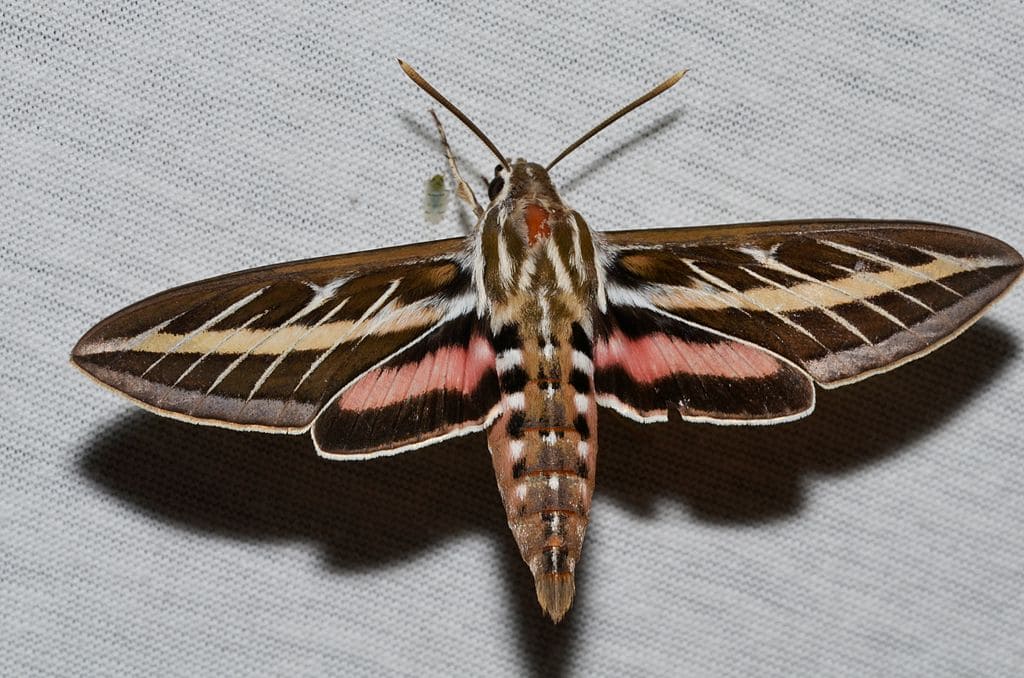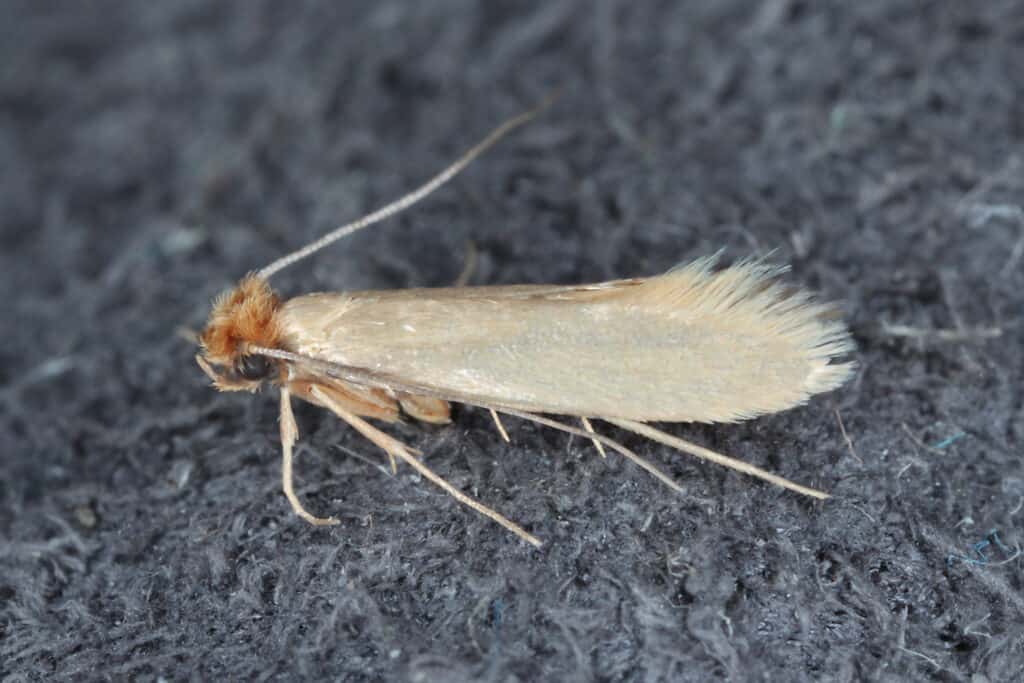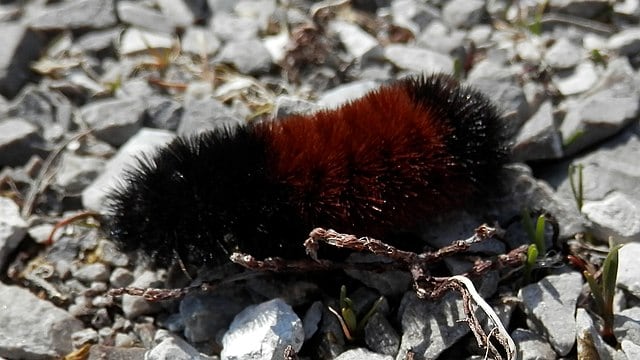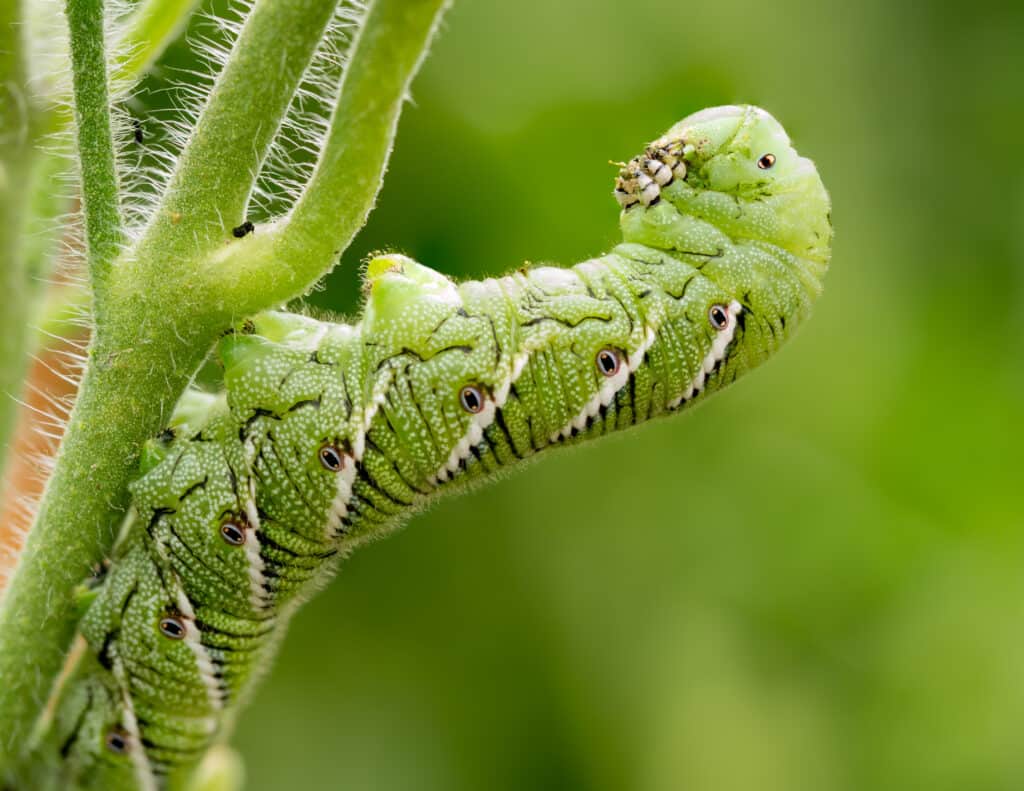Arizona is home to a very unique biodiversity. This is one of the reasons that this state it considered one of the best in the country for avid outdoors people. The sheer variety in the types of organisms and landscapes one can encounter is one of the highest in North America.
This is no less true for the insects that one can encounter in the Grand Canyon State. This includes Arizona’s very high density of butterflies and moths, which grace the state in most of its regions.
If you’re interested in the kinds of moths that you can commonly see in Arizona, take a look at this brief primer on the subject.
1. White-lined Sphinx Moth

The distinctive pink bands of the Sphinx Moth’s wings.
©Andy Reago & Chrissy McClarren, CC BY 2.0 , via Wikimedia Commons – License
White-lined Sphinx Moths (Hyles lineata) are very large moths active during the day and the night. This makes them distinctive from many other types of moths, which prefer to live and eat in the nighttime.
Because of their daytime behavior, along with their tendency to drink nectar from flowers, these moths are also known as hummingbird moths. This is partially due to the fact that they are often confused for hummingbirds.
This moth has a very wide geographical range outside of Arizona and lives in many other states. In some states, the caterpillar larvae of these insects have proved to be damaging to crops. This has lent to their status as a pest insect.
2. Common Clothes Moth

These moths may have ruined some of your favorite clothes.
©Thomas Kleidysz/Shutterstock.com
This entry is one of the most common species of insects in the world. It is also the source of the stereotype of a hole-ridden wool sweater. The Common Clothes Moth (Tineola bisselliella) has larvae that derive nourishment from the fibers of many common clothing materials. In particular, wool is a material that gets these larvae excited.
This strange insect is doubly so due to the peculiar lifecycle of the adult moths. The adult moths do not feed themselves once they hatch out of their chrysalis. Their only purpose is to breed in order to prepare the next generation of eggs.
3. Isabella Tiger Moth

The larvae of these moths is surrounded in superstition.
©Ryan Hodnett, CC BY-SA 4.0, via Wikimedia Commons – License
This species of moth is one of the insects that perhaps has more distinctive larvae than adults. The caterpillar of these moths has an unmistakable three-banded body that alternates red and black. That being said, the adults themselves aren’t homely by any means. This moth has a beautiful burnt orange coloration that makes it easy to identify.
There is some lore surrounding the coloration of Tiger Moth caterpillars that likely has no basis in reality. The folklore implies that there is a correlation between the width of the various bands of the caterpillar and the severity of the upcoming winter.
These caterpillars are also known as “wooly bears.” Their distinctive appearance has lent them celebratory festivals across the United States, where the larvae are common. This includes festivals in New York, Kentucky, and Ohio.
4. Cecropia Silk Moth

These moths are among the largest in the world.
©Jacy Lucier, CC BY-SA 4.0, via Wikimedia Commons – License
This beautiful moth has a distinctive red and black coloration that makes it hard to miss, along with its very robust size. The wingspan of these moths can easily range from four to six inches. This makes this insect one of North America’s largest moths.
This moth is another species that lives throughout North America. It exists in most US states. The Cecropia caterpillar is almost as interesting to look at as the adult moth. Chubby and rotund, this massive green worm has a number of distinctive orange globes along its back. These features make it easy to identify.
Strangely, these moths do not have any organs to consume food. Like some of the other moths on this list, the purpose of the adult moths seems to be to breed and then die. Given this, most adults only survive to be about two weeks old.
5. Tomato Hornworm Moth

These moths are a major garden pest.
©J Gillispie/Shutterstock.com
The Tomato Hornworm Moth is a major garden pest. This species of moth is particularly fond of nightshades. This eating habit has lent the moth its name and distinguished it from the closely related Tobacco Hornworm.
Tomato Hornworms live throughout North America. In Arizona, the moth’s propensity for nightshades has made it so that it can eat plants that are very toxic for other kinds of animals. This moth likes to munch on plants like Datura. This is a plant whose seeds and leaves act as a deadly poison for most types of mammals.
Tomato Hornworms are another very large moth, and it’s not uncommon to see individuals with wingspans over five inches.
Summary of the 5 Most Common Moths You’ll Find in Arizona
| Number | Name |
|---|---|
| 1 | White-lined Sphinx Moth |
| 2 | Common Clothes Moth |
| 3 | Isabella Tiger Moth |
| 4 | Cecropia Silk Moth |
| 5 | Tomato Hornworm Moth |
The photo featured at the top of this post is © Cathy Keifer/Shutterstock.com
Thank you for reading! Have some feedback for us? Contact the AZ Animals editorial team.






